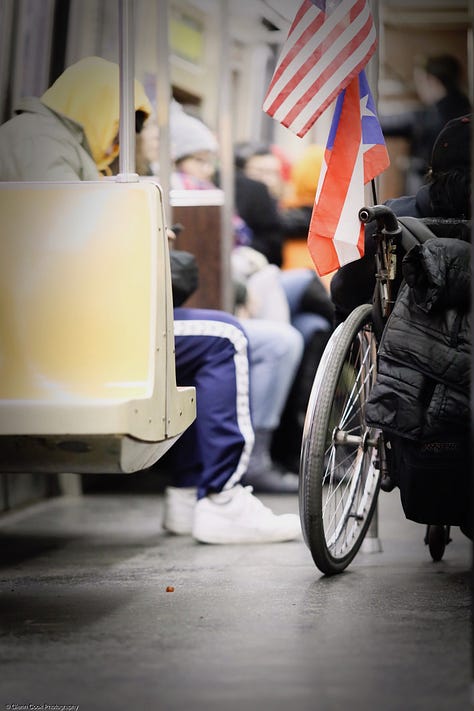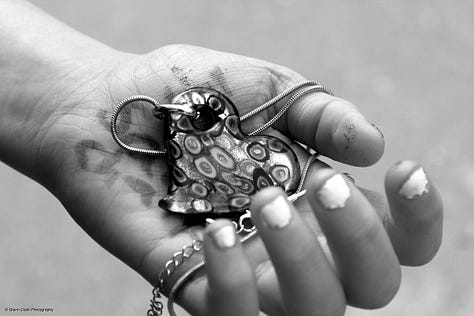Resilience
A look at the struggle to overcome the challenges we face in our daily lives
At first glance, you might wonder what the 27 photos in this post have in common.
But when you take a closer look, a theme starts to emerge. To me, each image is an example of resilience — how we work through the process of day-to-day stress, adversity, trauma, or tragedy.









Since childhood, I have been fascinated by how people overcome the obstacles they face. My dad’s long-term illness, which started when I was just 8, required deep wells of resilience, fortitude and undying love on the part of both of my parents just to keep their family and marriage afloat.
Naturally, I started asking questions. How do some find that resilience when others don’t? Is resilience genetic? Are some people destined to be more resilient than others?
As a writer and photographer, I enjoy telling the stories of others through words and images that convey emotion, determination, and resolve. All too often, news is viewed through the prism of conflict; the process of how and what it takes to resolve the conflict is ignored.
For me, resilience is the through line because — even though it is often associated with cataclysmic events — it is knitted through the web of everyday life.









What is Resilience?
According to the American Psychological Association, resilience is not part of your genetics, something you have or don’t. Resilience involves behaviors, thoughts, and actions that can be learned and developed in anyone. Developing caring and supportive relationships within and outside your family is key. Chances are you will be more resilient if you have relationships that involve love and trust and supportive role models who offer you encouragement during tough times.
Other contributing factors, according to the APA, include:
The capacity to make realistic plans and take steps to carry them out.
A positive view of yourself and confidence in your strengths and abilities.
Skills in communication and problem solving.
The capacity to manage strong feelings and impulses.
Some common examples of adapting using resilience include:
Being diagnosed with a serious illness.
Losing your job.
Recovering from a failed relationship.
Maintaining a balance between work and family life.
Dealing with difficult people.









The Resilience Project
Several years ago, as an artist-in-residence with the Arts Council of Fairfax County, I worked with seventh- and eighth-grade students at Holmes Middle School in Annandale, Va., on "The Resilience Project." For the project, I showed them several of the images you see here and worked with them on their own visual storytelling units, using photography/ video, interviews/observation, and the synthesis of information.
The students selected a parent, family member, teacher, or trusted adult. Many learned more about their parents' journey to America as immigrants, or how teachers and counselors work to help students in an incredibly diverse environment. Talking to the students about their subjects, you could see how they were learning lessons about the power of resilience in our everyday lives.
“We must never forget that we may also find meaning in life even when confronted with a hopeless situation, when facing a fate that cannot be changed.” — Viktor Frankel, Austrian psychiatrist, Auschwitz survivor and author of Man’s Search for Meaning
No question, teaching was a test of my own resilience. Both of my parents were teachers, and I've written about K-12 education for my entire career, so I knew some of the basics. Also, as a parent of four, I was prepared to deal with students who have a variety of learning styles. I knew some would be more engaged than others, a few would bring more knowledge to the table, and some would generally not give a damn.
Having that knowledge in advance, however, didn't prepare me for the reality of teaching, and for a time, I worried that the students would not complete the project. But in the end, it all worked out for the most part.
The work produced by most of the students exceeded my expectations, and it was showcased in a photo exhibit with a number of these images at the Workhouse Arts Center. I hope the students gained something from the experience, and was impressed by how invested several were in this idea — my idea — of developing art on a topic so close to my heart.
What do you think of this post? Do you have suggestions for future Visual Diary entries? Leave a comment below.

Great post, Glenn! Rather than focusing solely on risk factors, to be resilient we can make a conscious decision to focus on making use of protective factors. Protective factors can be intrinsic traits; but, they also can be chosen behaviors and what's in our social environments. The research on resiliency identifies specific protective factors that contribute to/enhance people's capacities to be resilient. Some key protective factors include: 1) our connections w/ other people, 2) having high expectations, 3) participating in meaningful activities, 4) engaging in lifelong learning.
Such amazing photographs and such a great message. Thanks for sharing.